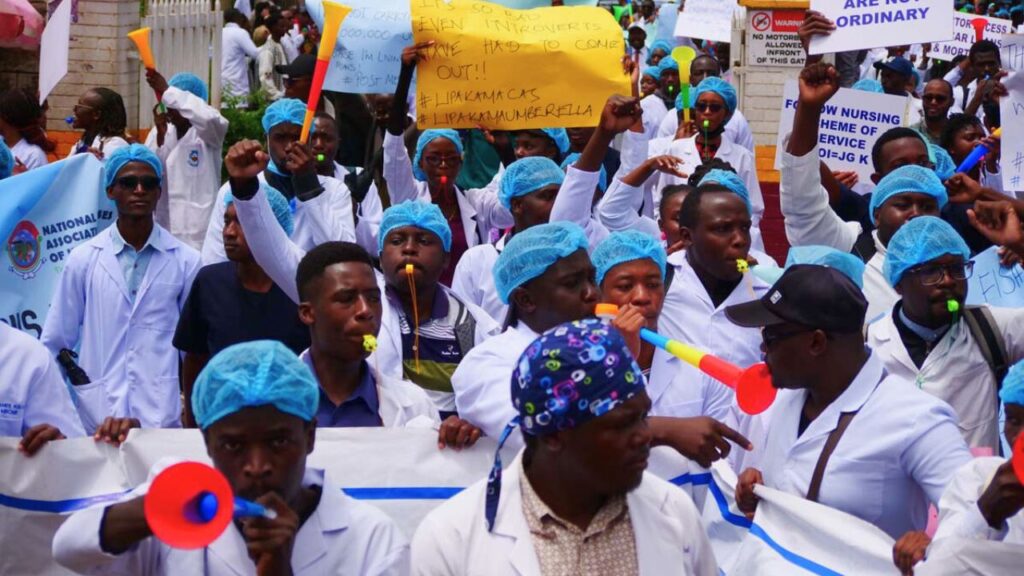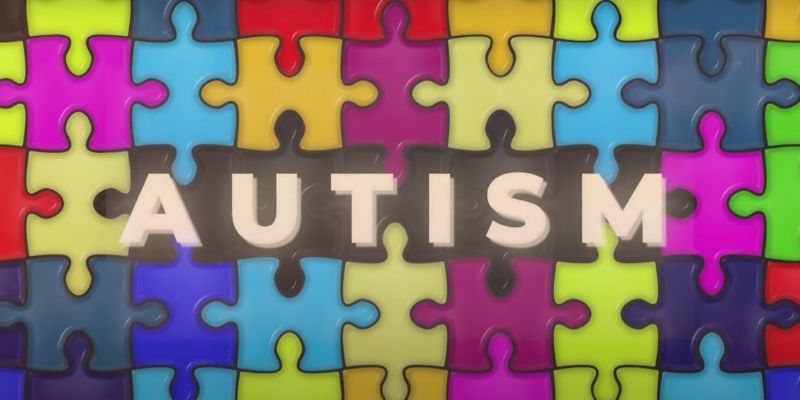This month, a journalist will have spent ten years in some form of imposed confinement.
The length of time may be setting a new record, but in general, this is not a unique situation for journalists, especially those working in the crisis-ridden countries of Africa, Central Asia and the Middle East. He has been a rape suspect, an asylum seeker, a declared fugitive, a target of high-level espionage and media vilification combining political and personal insults. He is now a high-level prisoner, in solitary confinement at the British Belmarsh prison, facing various charges while having been sentenced to fifty weeks for jumping court bail.
This is my best attempt to tell the long, convoluted, confusing and disgraceful story of one Julian Assange: hacker, multi-award winning journalist, media innovator and now prisoner in a process that can only be described as Kafkaesque.
It began in 2010 after a visit to Sweden, when he was accused by first one, and then two women of sexual offences. After one of the complainants dropped her accusation, and the initial state investigator saw no merit in the second accusation, the matter seemed to die out until a new Swedish prosecutor revived one of the cases in 2012, and issued an arrest warrant demanding Assange’s return to Sweden for questioning. Then in London, he was taken into British police custody and released on bail as he mounted a legal challenge to the Swedish request, which failed.
He still refused to return to Sweden, describing the entire saga as being a setup by the United States government, whose interest is to have him arrested so that it could then abduct and deal with him for his role in exposing US state security secrets, an exposure that has been huge. Using his purpose-built internet-based platform WikiLeaks, Assange, who developed an interest in investigation as a computer hacker during his youth in Australia, has sought out and attracted vast amounts of information revealing US human rights violations and war crimes across the globe, as well as diplomatic communications revealing a very cynical and dishonest approach to international affairs between allies and enemies.
This information has certainly left the United State diminished in the eyes of friend and foe alike, and has potentially exposed it to litigation under international law.
Sweden’s legal authorities also went on to establish a most extraordinary track record of flip-flopping over where they wanted Assange arrested and returned or not, whether they could interview him remotely by video link or not, whether he was wanted for further questioning or immediate charging, and if so, on which specific charges of the many they had floated.
That, perhaps more than anything, made Assange sense a trap. And so while still out on bail, he entered the Latin American Republic of Ecuador’s embassy in London in June 2012, where he requested, and was granted, political asylum. He was to remain marooned there for the next seven years, often addressing the media from the embassy’s balcony. Meanwhile, WikiLeaks continued to find and publish career-ending information greatly damaging to the American establishment, with British police officers camped outside te embassy for three years, waiting for an opportunity. On at least one occasion, they threatened to simply physically invade the embassy grounds.
There was no need to. An opportunity presented itself in 2019 when a new, possibly much more US-friendly government that had come to power in Ecuador, began to find fault with the behaviour of their London refugee. The subsequent changes in living conditions, communications, access to his lawyers, and possible permitting of the CIA to spy on him, left their now unwanted guest disoriented and disheveled. Finally, at the invitation of the embassy, Assange was physically dragged out by the British police, looking very different in physical appearance to the man who had sought refuge there nearly a decade earlier.
Assange has drawn the anger of the entire US governing establishment. Beginning with the Obama presidency, there have been calls from on high for everything, from his abduction to his prosecution and even his assassination. He insists, therefore, that criminal charges brought against him must be understood as well-planned persecution, designed to shut down WikiLeaks, and see him locked up indefinitely in some American dungeon.
Now firmly in British custody, he has been subjected to a number of court appearances. While still serving the sentence for jumping bail (an act that brought great financial cost to his sureties), the United States government filed charges of espionage, and applied for his extradition. And then a rape charge was revived, only to be dropped again a few months later.
Assange has drawn the anger of the entire US governing establishment. Beginning with the Obama presidency, there have been calls from on high for everything, from his abduction to his prosecution and even his assassination.
During this time, Assange’s own lawyers have complained about numerous violations of legal procedure, ranging from denial of access to the details of the charges against him, to access to legal counsel, to time to consider new charges before responding to them, and even inhumane detention conditions. These have been routinely and harshly dismissed by the judge, as they were by the one before her, when he was initially arrested. To this can be added the very strange 2013 objection by the British Crown Prosecution Service to the Swedish prosecutors’ then decision to drop the charge and extradition request against Assange for which the British were holding him in the first place.
Among the many things Assange’s resistance has exposed, there has been the specific thing of forcing the Americans to stop hiding behind proxies, and come out in the open and ask for him, and to have to do so in the context of a court hearing, however defective it has been procedurally.
But this has taken its toll.
At the beginning of these new hearings, Nils Melzer, the United Nations Special Rapporteur on Torture and Other Cruel, Inhuman or Degrading Treatment or Punishment, tweeted:
“Today, one year ago we visited #Assange in prison. He showed clear signs of prolonged psychological #Torture. First I was shocked that mature democracies could produce such an accident. Then I found out it was no accident. Now I am scared to find out about our democracies…”
What this signifies is a new level of crisis in the image and practice of Western governance, both in terms of the information that Assange compiled and systematically distributed, and also in the way he is being treated for having done so. It forces all onlookers to abandon any illusions they may have had about the true nature of Western power. It lies, it kills the innocent, and lies some more to cover up. It is concerned mainly with wealth, and has no faith in its own governing systems, and little respect for its so-called allies.
Assange has left Western democracy somewhat naked. The entire façade of democracy is seen as exactly that – a façade.
And the fact that it can no longer control these very secrets is only small part of the problem. The information has shown the US to be an empire in a deep crisis of power projection, probably beyond its means to solve.
It is a learning point for many Western minds, as illustrated by the American journalist Jonathan Cook, who wrote, “None of this happened in some Third-World, tin-pot dictatorship…It happened right under our noses, in a major western capital, and in a state that claims to protect the rights of a free press. It happened not in the blink of an eye but in slow motion – day after day, week after week, month after month, year after year.”
Assange has left Western democracy somewhat naked. The entire façade of democracy is seen as exactly that – a façade.
What Cook needs to appreciate is that Western Europe has been the most violent place on Earth for the last two hundred years, both domestically, and as an export to what is now called the Americas. It only stopped the domestic bloodletting over the last seven decades, which was the longest periods of continued peace since before even the Napoleonic wars, if one discounts the post-Soviet conflicts in the Balkans in the 1990s.
Despite his many media awards, Assange was initially laughed at for making this broad point about American power by people choosing to ignore what had happened to his key informant, the military intelligence analyst Chelsea Manning, and later Edward Snowden, the other Intelligence analyst-turned-whistleblower, also in exile from the United States. The greater body of Western liberal media and many others accused the Wikileaks founder of being dramatic, and looking for a way out of his rape accusations.
“When he hurried into Ecuador’s embassy…journalists from every corporate media outlet ridiculed his claim – now, of course, fully vindicated – that he was evading US efforts to extradite him and lock him away for good. The media continued with their mockery even as evidence mounted that a grand jury had been secretly convened to draw up espionage charges against him and that it was located in the eastern district of Virginia, where the major US security and intelligence services are headquartered. Any jury there is dominated by US security personnel and their families. His hope of a fair trial was non-existent,” writes Cook.
Only the most cynical will still insist that nothing is wrong, and that Assange has been right in his alleged paranoia.
But this has exposed the bare bones of how the Western power system works. We should not be shocked, because this has been the colonial and post-colonial experience.
Just last month, a Kenyan news outlet published a ten-year investigation, showing that the US Central Intelligence Agency is managing and financing a death squad in Kenya, whose purpose is to target and kill suspected Islamic militants.
But the story is much deeper.
In her 1984 book, Ireland: The Propaganda War, the journalist Liz Curtis revealed a whole hidden culture of tight censorship and even propaganda by the British media in collusion with the British security establishment, particularly the British Broadcasting Corporation (BBC). The purpose was to cover up evidence of malfeasance by the British security forces and allies, to muffle the arguments for Irish independence.
This was to later lead to some truly ridiculous antics on the part of the BBC and other British broadcasters. For example, between 1988 and 1994, the broadcasting of voices of politicians associated with the Irish nationalist movement was banned; their voices had to be erased and a voice-over reader had to say their words for them. There were guidelines to ensure that camera angles intended to make Irish nationalists more intimidating and aggressive were used while interviewing them, as well as editorial fights over words, such as terrorist versus gunman versus fighter versus guerilla versus militant.
If anyone cared to look, many UK newspapers, in particular the Guardian, also willfully misreported the post-1986 Uganda story in such a way as to basically collude in the cover-up of the atrocities the then new heavily British government-backed National Resistance Movement government was committing in northern Uganda. On the question of access to justice, this was simply the first fully open case in which Britain’s colonial traditions of “justice” collided with domestic ones.
The there was a period of expansion, probable from the 1850s, rising exponentially through to the onset of the War on Terror (2001 to date), in which the British people became increasingly self-assured about their rights, and their legal standing in relation to the state. But that was one side of the story because at the same time, the British empire was undergoing its final phase of expansion to completely envelop Africa and Asia, even as it recovered from the loss of the Americas.
“British justice” was delivered very differently in these British spaces. A key difference was the practice of juryless courts, in which just a judge would now both chair the proceedings, as well as decide on the innocence or guilt of the accused.
Even where juries had been present, such as in Ireland, they were dispensed with at the height of the conflict there in the 1980s, as was the 48-hour detention rule, immediate access to a lawyer, and the right to remain silent upon arrest.
There is even a little-known but significant 1979 UK Court case in which the judge was dissuaded by the Executive from using the word “war” when considering whether a lady engaged to a Special Forces soldier who had been shot dead by guerillas in Northern Ireland was entitled to his property and benefits. In UK law, a partner not formally married to a soldier killed on active duty could only claim his estate in a period officially declared as war. Had the court used that word, then the British government’s then campaign to characterise the conflict as criminal terrorist activity – through which it had withdrawn Prisoner of War status for captured Irish combatants – would have fallen apart.
The ongoing farce at Britain’s Old Bailey court, in which a clearly partisan judge is basically railroading Assange to become an American captive, is simply the moment in which we clearly see that these two traditions were always just two branches growing from the same tree trunk.
Certainly in Africa, the tradition of colonial justice continues with juryless courts, detention without trial, and severe media censorship. The restrictions that the Western War on Terror imposed domestically found us ready and waiting.
Cook would benefit from understanding that what he has called “Third world tin-pot dictators” are actually a projection of Western power, not something apart from it. They are a vital cog in the global machinery that has enabled Western plunder of African and other resources to continue.
Certainly the American apartheid system (1877-1962) was a systematic denial of justice to African Americans and Native Americans before that.
“British justice” was delivered very differently in these British spaces. A key difference was the practice of juryless courts, in which just a judge would now both chair the proceedings, as well as decide on the innocence or guilt of the accused.
So the real question has been: which is the real face of Western power, prestige and authority? Is it the legacies of the iron fist of some African despot killing journalists, and the Asian oligarch bribing editors into silencing their newsrooms? Or is it the sometimes grudging freedom accorded to Western judges and journalists?
Until these events, those were seen as three separate worlds. With the treatment of Assange by the Western mainstream media, the governments of Sweden and Britain (and even his native Australia who made it officially clear very early on that their citizen’s problems were none of their concern), and the British judges, the distinction is no longer really made.
A lot of the real implications of such abuses in the Third World were masked by the 1946-1989 NATO vs Soviet Union Cold War, which was even used to justify them.
But now the mask has been fully ripped off – in what Assange showed them doing, and what they have done to him because of that. We now have three casualties: Assange, Western systems, and also the Western image of itself previously projected on the world.
Key pillars of the democratic system – an independent justice system, and a free media – are under a new and more intense kind of threat.
This teaches us that all those high values were never the gifts that the powerful bestowed on the ordinary person; they were rights that the ordinary person fought for, and forced the powerful to concede. And those in power, especially in the Western world, have long been looking for an excuse to take them away again.
Assange deserves our gratitude for bringing out this lesson, and our prayers for the hell he is being put through for having done so.








